The Vehicle Identification Number (VIN) of your Polaris ATV is a unique number used to identify your vehicle. It is stamped on the frame of your ATV. On vehicles from 1997 and newer, the VIN is 17 digits. Prior to that, a VIN was only seven digits.
What year is y in polaris? That tells you what year it is. “Y” is 2000, “1” is a 2001 and so on. Just as important to you when buying parts and accessories for any Polaris is the model number.
What year did polaris magnum start? Starting in 1995 with the Polaris Magnum 425 4-stroke ATV and in 1997, with the introduction of the “twin 700” snowmobile engine Polaris started the development and production of in-house produced power plants, known as the “Liberty” line of engines, now found in many models across their current production lines.
When did the first Polaris ATVs start showing up? After 30 years of building snowmobiles, the first Polaris ATVs began showing up on dealer floors in 1985, throwing a wrench in an industry that up to that point was completely dominated by Japanese brands. Not only were these 1985 models the first Polaris ATVs…they were the first American-made ATVs.
What is a Polaris ATV? Polaris ATVs have pushed the boundaries ever since and the brand saw huge success with the venerable Sportsman 500 and its innovative front storage system. But when most people think of Polaris, the first thing that comes to mind is the RZR.
Table of Contents
It is stamped on the frame of your ATV.
– Find the 17-character vehicle identification number on the frame of your four wheeler.
– Look at the 10th character of the vehicle identification number.
– Use the 10th character to determine the year model of the four wheeler.
Read the tenth digit. This digit represents the year that the ATV was made. For example, A=1980, B=1981, Y=2000, 1=2001, 9=2009 and A=2010. This letter or number can repeat (the “A,” for example), but the codes of the other digits in the VIN allow you to know in which year the ATV was made.
– On vehicles from 1997 and newer, the VIN is 17 digits.
– For Sportsman 400, 450, 500, 570, 800 and ETX models; 2013 Hawkeye models and Sportsman 6×6 models from 2011-14, the VIN can be found on the left rear frame (1).
So why is the light still on? Here’s something you probably don’t know: after clearing the car’s computer you will need to drive for about 50 to 100 miles. As you drive your car the computer will monitor all the sensors and register the results.
Check that the 10th digit matches the year of manufacture. From 2000 onward, it is a number, and before 2000, it is a letter. For example, a 1998 model will have the letter W in the 10th position. Determine the plant where the ATV was made with the 11th digit.
Interpret the 10th character to find the year the vehicle was manufactured.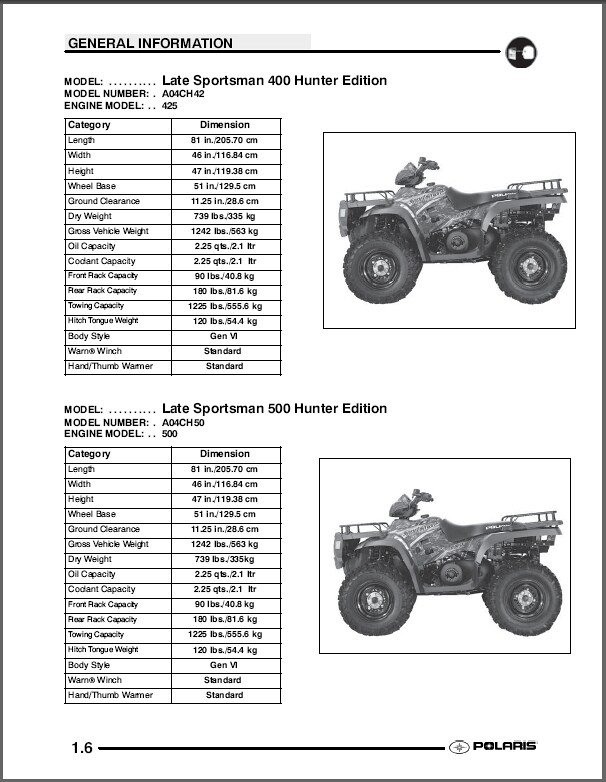 The letter S is used for 1995, T for 1996, V for 1997, W for 1998, X for 1999, Y for 2000. The number 1 is used for 2001, 2 for 2002, 3 for 2003, 4 for 2004, 5 for 2005, 6 for 2006, 7 for 2007, 8 for 2008 and 9 for 2009.
The letter S is used for 1995, T for 1996, V for 1997, W for 1998, X for 1999, Y for 2000. The number 1 is used for 2001, 2 for 2002, 3 for 2003, 4 for 2004, 5 for 2005, 6 for 2006, 7 for 2007, 8 for 2008 and 9 for 2009.
Turn the ignition on and wait for the “service engine soon” light to blink and shut off. This will reset the light on your dash.
The flashing service wrench icon on a Polaris Sportsman’s speedometer can lead many riders to panic. In most cases, this icon is triggered by the engine’s hours of operation reaching a programmed interval, and it acts as a friendly reminder that your ATV is ready for a routine servicing.
Can you reset check engine light without disconnecting battery? You can reset the check engine light without disconnecting the battery by using an OBD2 scanner. If you drive long enough after fixing the problem, the check engine light will on most car models go away by itself.
If you drive long enough after fixing the problem, the check engine light will on most car models go away by itself.
A Polaris ATV vehicle identification number, which contains the serial number, is typically on the left frame rail inside the left-front wheel well next to the fender on the right hand side. The last six characters of the VIN are the vehicle’s serial number.
The Vehicle Identification Number (VIN) is a unique 17-digit number used to identify your Polaris RANGER. Your RANGER’s VIN can be found stamped on the frame. Its exact location varies based on model. Most RANGER vehicles from model year 2015 until present feature a VIN stamp in the left rear wheel well.
– Find the 17-character vehicle identification number on the frame of your four wheeler.
– Look at the 10th character of the vehicle identification number.
– Use the 10th character to determine the year model of the four wheeler.
Interpret the 10th character to find the year the vehicle was manufactured. The letter S is used for 1995, T for 1996, V for 1997, W for 1998, X for 1999, Y for 2000. The number 1 is used for 2001, 2 for 2002, 3 for 2003, 4 for 2004, 5 for 2005, 6 for 2006, 7 for 2007, 8 for 2008 and 9 for 2009.
Turn the ignition on and wait for the “service engine soon” light to blink and shut off. This will reset the light on your dash.
Insert the key in the ignition, turn the car on for a second, and turn it off for another second. Repeat this process three times. Once you turned your car on/off three times, the check engine light should go away by itself.
Sign in
Welcome!Log into your account
your username
your password
Forgot your password?
Password recovery
Recover your password
your email
Search
When you purchase through links on our site, we may earn an affiliate commission. As an Amazon Associate I earn from qualifying purchases.
As an Amazon Associate I earn from qualifying purchases.
These stats are averages based on comparing several models from different manufactures in each size category, so expect some minor variations from individual manufacturers/models.
Keep scrolling to see photos of ATVs in each size category including ATV sizes for adults.
ATV Sizes Chart: Engines, Max Speeds, Models And More| Engine Size | Max Speed | Driver Ages | MSRP |
|---|---|---|---|
| 50cc | 17 MPH | 6+ | $2,200 - $2,500 |
| 70cc | 10 MPH | 6+ | $2,200 - $2,700 |
| 90cc | 32 MPH | 10 - 12 | $2,700 - $4,000 |
| Engine Size | Max Speed | Driver Ages | MSRP |
|---|---|---|---|
| 200cc | 38 MPH | 14+ | $4,400 - $4,800 |
| 250cc | 60 MPH | 14 - 16 | $4,400 - $5,200 |
| 270cc | 40 MPH | 14 - 16 | $4,100 - $4,400 |
| 300cc | 40 MPH | 16+ | $4,400 - $4,700 |
| 400cc | 67 MPH | 16+ | $5,700 - $7,100 |
| 450cc | 73 MPH | 16+ | $5,900 - $6,600 |
| Engine Size | Max Speed | Driver Ages | MSRP |
|---|---|---|---|
| 500cc | 63 MPH | 16+ / Adult | $5,600 - $7,600 |
| 650cc | 73 MPH | 16+ / Adult | $8,700 - $12,200 |
| 700cc | 71 MPH | 16+ / Adult | $7,100 - $10,000 |
| 800cc | 75 MPH | 16+ / Adult | $8,600 - $10,000 |
| 1000cc | 81 MPH | 16+ / Adult | $13,500 - $14,800 |
The prices, MSRPs, age recommendations, measurements and weights listed are based on industry averages comparing several different models in the some cc class.
The ATV speeds listed are the top speeds that these engines can potentially run. This is what I would consider the “aspirational” speed – like if your machine is in perfect working order, traveling down hill with a brisk wind at your back.
To get a more realistic view of the average ATV speeds you could expect in normal riding conditions subtract 2-7 MPH.
Generally speaking, the more cc – the bigger and heavier the bike.
However, across manufacturers and models there may be manufacturing differences and upgrades that may cause some vehicles to be heavier and/or lighter than a similar or even a smaller/larger ATV.
For example, a model that is labeled for “mud”, “hunting” or “touring” may have larger tires, heavy duty shocks, winches and upgraded components, all of which would make the ATV heavier.
The weights listed are an average of several different models in the same cc class.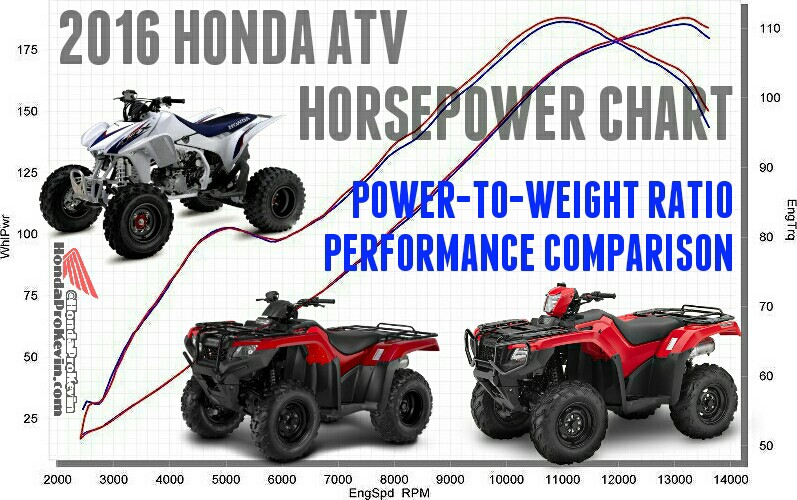
ATV sizes from 50cc – 90cc are the smallest ATVs designed for use by children. Typically these ATVs will have built in safety features like engine limiters to control speed and power cut-off tether switches.
- Advertisement -
There are mixed opinions regarding ATV use by children. Some experts say children should never ride an ATV, while others use a more tempered approach focusing on training and adult supervision. Check out Is Your Child Ready For An ATV? for a more in depth look at this topic.
To see an ATV sizes chart specifically for children’s ATVs: ATV Sizes By Age: What Size Is Best For Ages 6 -16
50cc ATVATVs from 200cc – 270cc are for more mature riders in the 14 – 16 age range.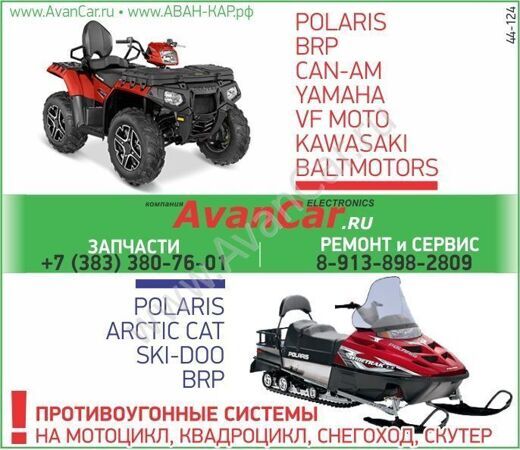 Mid-size ATVs are significantly larger, heavier and faster than the small ATVs, which also makes them potentially more dangerous for smaller riders.
Mid-size ATVs are significantly larger, heavier and faster than the small ATVs, which also makes them potentially more dangerous for smaller riders.
Engines from 300 cc and up are for riders 16 and older, with typical adult models starting at 400 cc.
None of the major ATV manufactures currently have any 350cc in their lineup. There used to be several 350cc on the market, but these models have fallen out of favor. Buyers are now choosing to go to the 300cc or the 400cc.
200cc ATVATV sizes in the 500cc – 1,000cc range are strong, fast, capable workhorses that get you where you want to go.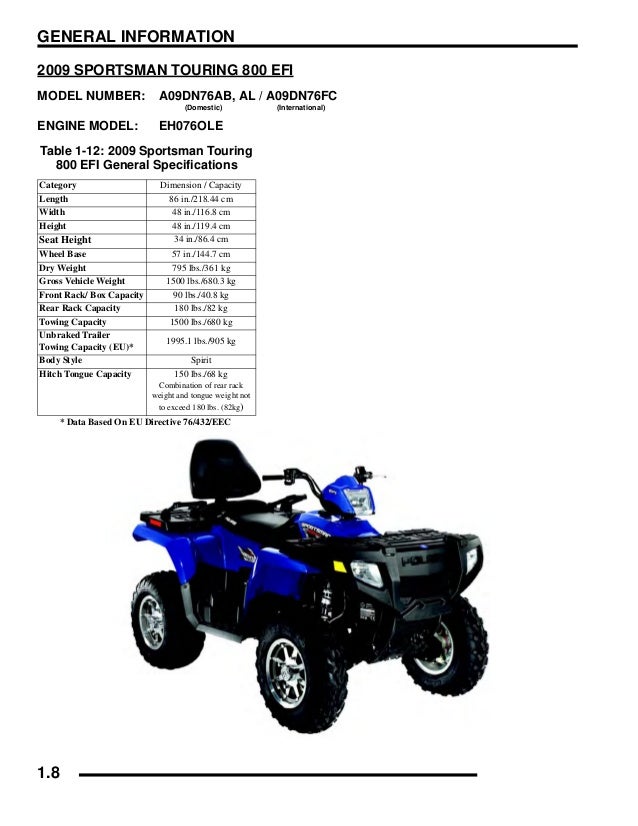 These big beasts can be used for both fun and work. They can climb hills, tear through mud, conquer rough terrain, tow and plow.
These big beasts can be used for both fun and work. They can climb hills, tear through mud, conquer rough terrain, tow and plow.
Large ATVs offer excellent acceleration, power and speed. Plus, they can also carry heavier loads making them ideal for hunting and camping. These are the best ATV sizes for adults.
500cc ATV- Advertisement -
Articles
04 Mar
The 2020 Polaris lineup includes two true monsters: the Sportsman XP 1000 S and Scrambler XP 1000 S liter utility trucks. In this article, we will look at the main characteristics of these models.
In this article, we will look at the main characteristics of these models.
The new Polaris Sportsman and Scrambler ATVs are “square” – the difference between width and height is minimal. For comparison: the width of most ATVs is up to 122-127 cm with approximately the same wheelbase. The increased width between the wheels makes the ATV more stable when cornering, when maneuvering at high speed, and when riding on inclines.
| Sportsman XP 1000S | Scrambler XP 1000S | |
| Length, mm | 2114 | 2095 |
| Width, mm | 1400 | 1400 |
| Wheelbase, mm | 1458 | 1458 |
| Clearance, mm | 368 | 368 |
| Height, mm | 1289 | 1257 |
| Landing height, mm | 940 | 940 |
| Weight, kg | 440 | 400 |
Clearance deserves special attention: almost 37 cm versus 26-30 cm for most models on the market. To increase ground clearance, the chassis arms are curved front and rear.
To increase ground clearance, the chassis arms are curved front and rear.
So the Polaris Sportsman XP 1000 S and Polaris Scrambler XP 1000 S will be able to go where a regular ATV would get caught on the bottom or lever.
The engine for both new products is the same: ProStar SOHC, 2-cylinder 4-stroke, with a volume of 952 cm³, with electronic fuel injection and liquid cooling. For more than 5 years, these engines have been put on the most powerful Polaris ATVs: ProStar are on the RZR, Ranger and ACE. Only the power is slightly different: the Sportsman puts out 90 hp, Scrambler - 89.
Transmission without frills, everything is time-tested: automatic transmission with park gear, neutral, reverse and two forward gears - low and high. Drive - plug-in full (AWD / 2WD).
There is an engine mode switch on the left handlebar:

Tank capacity for both models - 19.9 l. For a heavy ATV with a powerful liter engine, this is not too much.
The suspension of the Polaris Sportsman XP 1000 S and Polaris Scrambler XP 1000 S is the same front and rear: independent, on paired A-arms. Only the stroke of the shock absorbers differs:
The shocks are also slightly different, the Sportsman has Walker Evans 2.0 and the Scrambler has 3-way Walker Evans Premium with 2 coil springs. This update: The "old" versions of the Polaris Scrambler had FOX shocks. The travel of shock absorbers can be adjusted depending on the surface. The WE Premium has a larger range of adjustments - you can adjust the rebound, low- and high-speed compression stroke.
As for tires, the Polaris Sportsman XP 1000 S has CST wheels. Earlier generations of Athletes also had such rubber, and it proved to be excellent. The size of the rear wheels is 26x10-14", the front wheels are 26x8-14". Aluminum rims, 14 inches.
The size of the rear wheels is 26x10-14", the front wheels are 26x8-14". Aluminum rims, 14 inches.
The Polaris Scrambler XP 1000 S has Duro PowerGrip II 27×9” tires on all wheels. This is an update: Scramblers used to have CST wheels, just like Sportsmen. The same wheel size improves maintainability: you can carry only one spare tire with you. The tires are fitted with 12" aluminum rims as standard.
Polaris Sportsman XP 1000 S:
Polaris Scrambler XP 1000 S:
Both models are ideal for demanding trails and extreme rides for fun.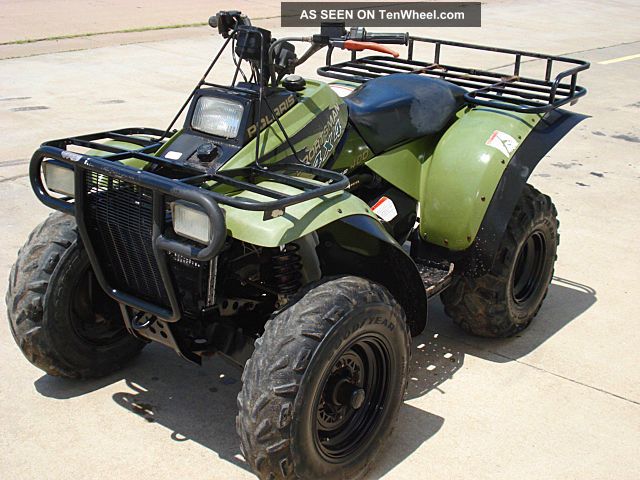 To do this, they have an impressive ground clearance, and large wide tires, and an engine with a large power reserve. In terms of performance, the main difference lies in the suspension: in the Polaris Scrambler XP 1000 S, it can be more precisely adjusted, well, it has a lot more travel.
To do this, they have an impressive ground clearance, and large wide tires, and an engine with a large power reserve. In terms of performance, the main difference lies in the suspension: in the Polaris Scrambler XP 1000 S, it can be more precisely adjusted, well, it has a lot more travel.
We will tell you about the classes of ATVs and ATVs, talk about their features, find out how one model differs from another.
ATVs and Side-by-Sides are very popular types of wheeled off-road vehicles. In terms of price, cross-country ability, safety, comfort and ease of control, they are far ahead of all other vehicles on the market. To buy an ATV or ATV, you need to understand their types and design features.
The most popular and widespread class of ATVs. Initially, they were intended primarily for work. But now they are used in a variety of areas: for travel, hunting, fishing, riding around the cottage, in general, wherever good cross-country ability and a comfortable fit combined with small dimensions are required.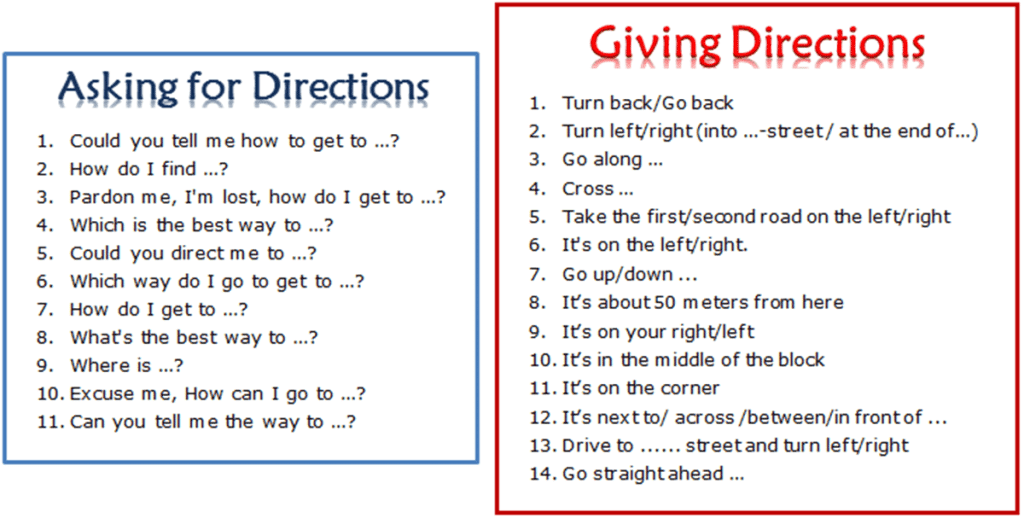 They overcome swamps, windbreak, quickly travel along dirt roads and, in some modifications, carry a passenger. These ATVs are produced in a variety of options, most of which would be more correctly called not utilitarian, but universal. Engine displacement with one or two cylinders reaches 1000 cm3. The drive switches between rear and all-wheel drive either manually or automatically.
They overcome swamps, windbreak, quickly travel along dirt roads and, in some modifications, carry a passenger. These ATVs are produced in a variety of options, most of which would be more correctly called not utilitarian, but universal. Engine displacement with one or two cylinders reaches 1000 cm3. The drive switches between rear and all-wheel drive either manually or automatically.
Front differential lock for greater cross-country ability is also activated by the driver or automation. Utility quads have exotic varieties, such as six-wheel drive all-wheel drive. The utility ATV's main competitor is the off-road vehicle. It is more convenient to ride in it and you can take away more cargo, but in terms of cross-country ability, it loses with a devastating score, it is easier to break and harder to repair. In addition, the price of ATV is several times lower.
With the growing popularity of utility ATVs, they began not only to work or ride around the cottage, but also to participate in races.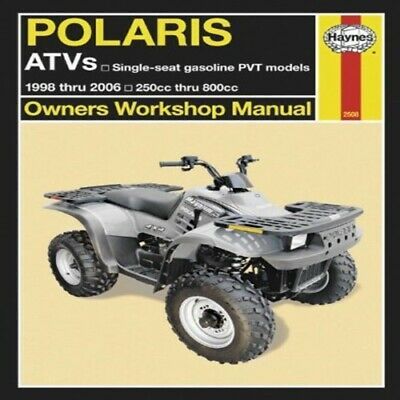 Along the way, it turned out that by sports standards there are too many details in them, some nodes do not withstand jumps and contact fighting. Therefore, large manufacturers began to build sports equipment based on top all-wheel drive models. It has no frills like high windows and multi-level seats, a stronger suspension and transmission, ergonomics are not designed for maximum comfort, but for fast driving with constant body movement. A similar effect can be achieved by altering a utility all-terrain vehicle, but buying a sports ATV is easier and cheaper.
Along the way, it turned out that by sports standards there are too many details in them, some nodes do not withstand jumps and contact fighting. Therefore, large manufacturers began to build sports equipment based on top all-wheel drive models. It has no frills like high windows and multi-level seats, a stronger suspension and transmission, ergonomics are not designed for maximum comfort, but for fast driving with constant body movement. A similar effect can be achieved by altering a utility all-terrain vehicle, but buying a sports ATV is easier and cheaper.
Selling sport quad bikes is not a very big business. But for big manufacturers, it's a good way to test and showcase new technologies and add brand value through race wins.
ATVs are not only all-wheel drive. A specific and not very developed class in our country is sports ATVs with rear axle drive. They are light, fast and agile, designed for riding on rough terrain with a relatively hard surface, where you can slip through due to speed and low weight.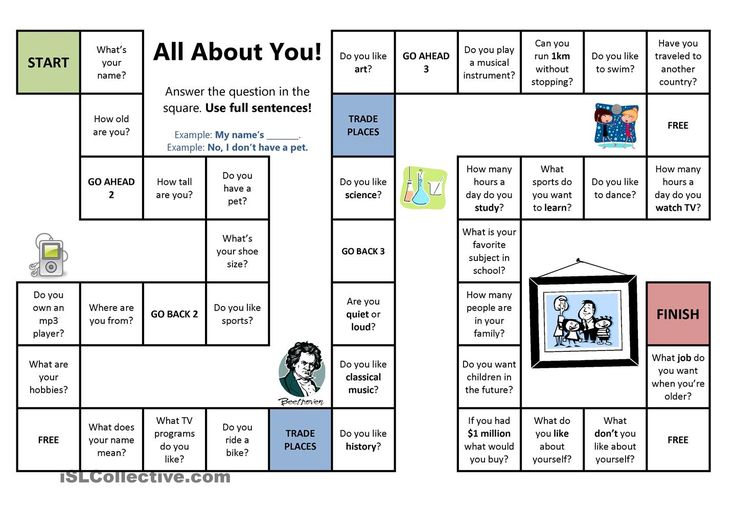 Ground clearance is low, making it difficult to drive over logs, rocks, and deep ruts. With rare exceptions, there is a solid axle at the back. Due to their simple design with a minimum of parts, rear wheel drive ATVs rarely break down. Therefore, they are loved to be used in competitions where reliability and weight are important, from ATV cross-country to rally raids, including Dakar. In terms of speed and patency, only cross-country and enduro motorcycles can compete with rear-wheel drive ATVs. Two-wheeled vehicles are usually faster, but more difficult to drive and more traumatic. Also in the rear-wheel drive version, children's ATVs are produced.
Ground clearance is low, making it difficult to drive over logs, rocks, and deep ruts. With rare exceptions, there is a solid axle at the back. Due to their simple design with a minimum of parts, rear wheel drive ATVs rarely break down. Therefore, they are loved to be used in competitions where reliability and weight are important, from ATV cross-country to rally raids, including Dakar. In terms of speed and patency, only cross-country and enduro motorcycles can compete with rear-wheel drive ATVs. Two-wheeled vehicles are usually faster, but more difficult to drive and more traumatic. Also in the rear-wheel drive version, children's ATVs are produced.
Side-by-Side all-terrain vehicles, also known as UTVs or SSVs, are relatively new modes of transport. Initially, these were modest working cars, reminiscent of golf carts. Until it turned out that they are no less fun to ride than ATVs, while the seats and controls are similar to those of a car, so the driver does not have to get used to the new ergonomics.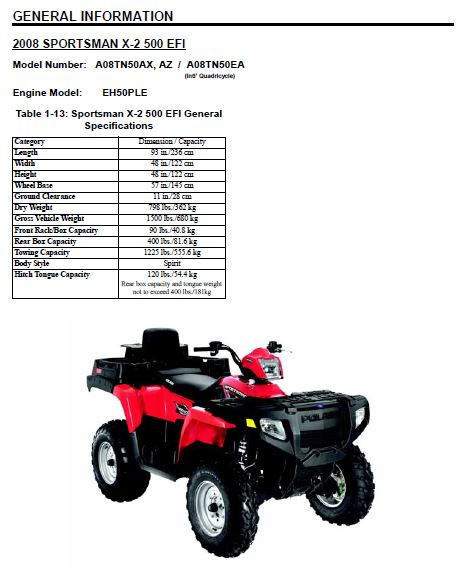 And safety is a level higher thanks to a powerful steel frame. In addition, rollovers are relatively painless not only for the crew, but also for the car: if a car after a rollover requires very expensive repairs, an accident on Side-by-Side costs much less damage. At first, "sides" were built on the basis of ATVs, now these directions have diverged very far. ATVs have become larger and more powerful, with separate engines and suspension systems being developed for them.
And safety is a level higher thanks to a powerful steel frame. In addition, rollovers are relatively painless not only for the crew, but also for the car: if a car after a rollover requires very expensive repairs, an accident on Side-by-Side costs much less damage. At first, "sides" were built on the basis of ATVs, now these directions have diverged very far. ATVs have become larger and more powerful, with separate engines and suspension systems being developed for them.
The vast majority of engines are gasoline, but there are diesel and electric ones. A common part of a utility ATV is a dump body, into which a large amount of cargo breaks. Basically, the buyer chooses whether to buy him an all-terrain vehicle or an ATV. The benefits of Side-by-Side in terms of carrying capacity, safety and comfort are clear. And the ATV wins due to the smaller size and price, it is easier to buy, store, transport and repair.
The sport side-by-side class comes from the Polaris RZR, a line of models that is still at the forefront of the industry. Most of all, sports Side-by-Sides resemble buggies. But they are much more affordable in terms of both price and market presence. You can buy an all-terrain vehicle ready for competitions in a regular dealership. Top models are equipped with turbocharged engines with a capacity of up to 170 horsepower. Huge adjustable shock absorbers allow you to very quickly ride on broken ground and jump jumps on cross-country tracks.
Most of all, sports Side-by-Sides resemble buggies. But they are much more affordable in terms of both price and market presence. You can buy an all-terrain vehicle ready for competitions in a regular dealership. Top models are equipped with turbocharged engines with a capacity of up to 170 horsepower. Huge adjustable shock absorbers allow you to very quickly ride on broken ground and jump jumps on cross-country tracks.
The latest models are equipped with an electronic adaptive suspension that automatically adjusts to the driving conditions. The price of such ATVs reaches automobile values, but not a single car from the passenger compartment will go off-road at such a speed. There are simpler models, they drive a little slower, but are more affordable. The sporty Side-by-Sides have specialized varieties for hauling a crew of four, riding in deep mud or desert.
This new and unusual vehicle is only available from Polaris. ACE is a hybrid of ATV and Side-by-Side.